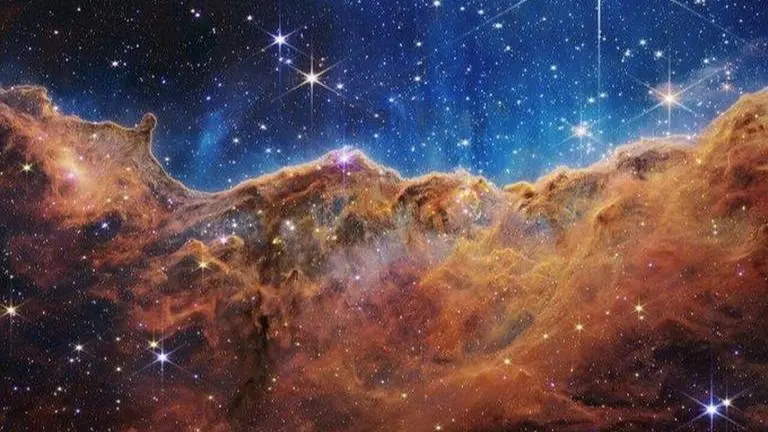Updated 28 July 2022 at 15:55 IST
James Webb Space Telescope will shed light on star formation; here's how
The James Webb Space Telescope photographed the Carina Nebula whose star-forming region named NGC 3324 will shed more light on star formation.
- Science News
- 2 min read

The new image of the Carina Nebula captured using the James Webb Space Telescope (JWST) has astronomers excited as they are hopeful for groundbreaking discoveries in the future. Thanks to Webb's unprecedented infrared vision, it has spotted new stars and star-forming regions which, according to scientists, would help shed light on the process of star formation.
According to the European Space Agency (ESA), one of the developers of the JWST besides NASA and the Canadian Space Agency (CSA), the new picture might also answer what determines the number of stars that form in a certain region.
"Star birth propagates over time, triggered by the expansion of the eroding cavity. As the bright, ionised rim moves into the nebula, it slowly pushes into the gas and dust", ESA said while explaining the process of star formation. "If the rim encounters any unstable material, the increased pressure will trigger the material to collapse and form new stars".
#Webb will also address some of the great, open questions of modern astrophysics: What determines the number of stars that form in a certain region? Why do stars form with a certain mass?
— ESA Webb Telescope (@ESA_Webb) July 28, 2022
Read more here: https://t.co/3ZQ9Hhzrck#WebbSeesFarther 👇
What did Webb see in the Carina Nebula?
When compared to the Hubble Space Telescope, Webb is much more sensitive to infrared light, meaning it could easily peer through the cosmic dust hiding many objects behind it. Hubble too has observed the Carina Nebula, but its relatively weaker infrared vision missed out on several of its prominent features.
Advertisement
Need a new perspective? Here’s some Webb-inspired #MondayMotivation: Sometimes, seeing clearly requires looking at things with a fresh set of eyes. When you’re able to peer through the dust, that’s when you can reveal even more stars. ✨ pic.twitter.com/VwVikbHdlL
— NASA Webb Telescope (@NASAWebb) July 25, 2022
However, Webb has offered a clear view of a star-forming region featuring a landscape of “mountains” and “valleys” speckled with glittering stars. Named NGC 3324, this region has areas of star birth that were previously invisible. In a report, ESA said that the craggy mountain-like structure called the Cosmic Cliffs is basically the edge of the giant, gaseous cavity within NGC 3324 and the tallest “peaks” in this image are about 58 light-years high. The Carina Nebula lies about 7,600 light-years away in the southern constellation Carina and is listed among one of the largest and the brightest.
The image above was released on July 12 along with several other pictures of other celestial objects. With the official commencing of Webb's operations, astronomers are aiming to observe several other nebulae, exoplanets, comets and asteroids in order to gain insights into the evolution of the universe.
Advertisement
Published By : Harsh Vardhan
Published On: 28 July 2022 at 15:55 IST
